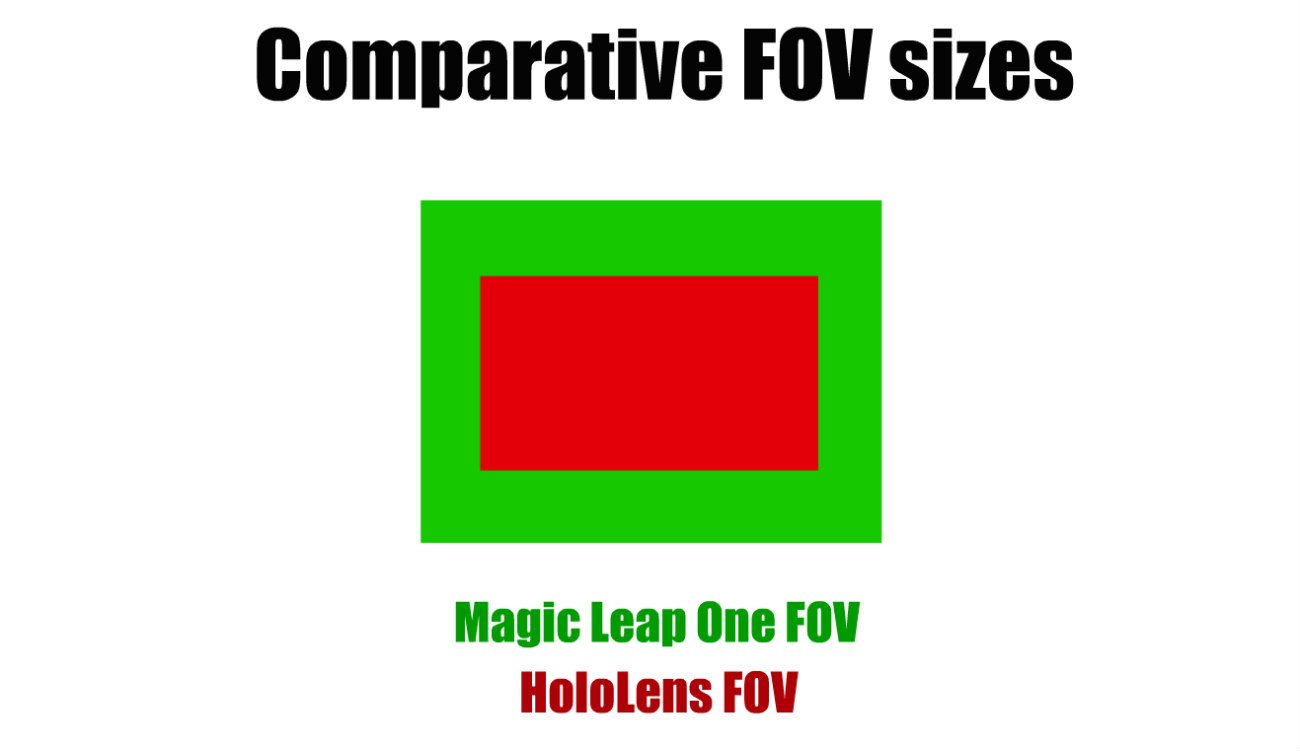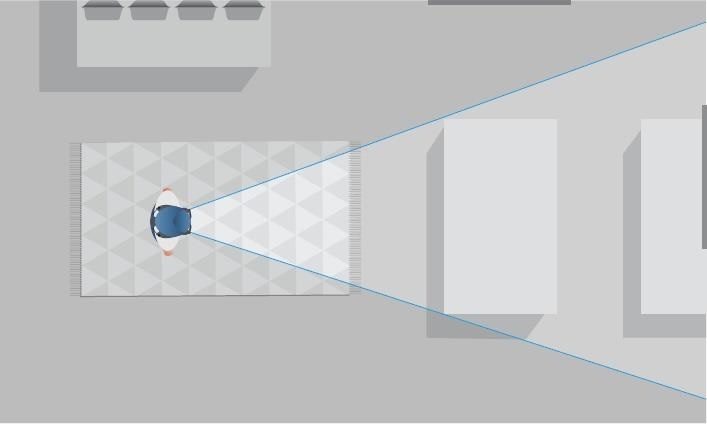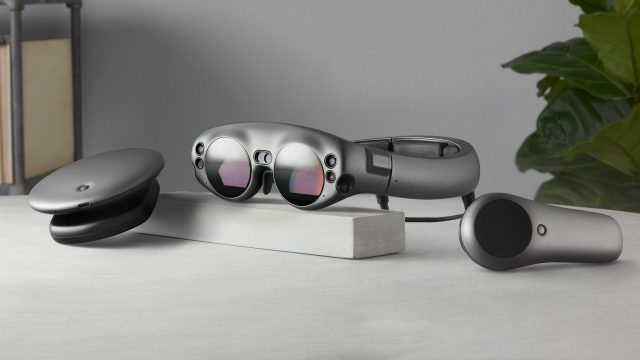Magic Leap One is headed out to doorsteps this summer, that much is certain. And despite knowing some of the AR headset’s specs, there’s still an extremely important piece of the puzzle that has been missing in official documentation: field of view (FOV).
According to a report by Next Reality, users accessing the developer site have been privy to some hidden information. One such developer reportedly found the final text describing Magic Leap One’s FOV, which was buried in the site’s source code.
Peering into client-side source code of the FOV documentation page, which ostensibly featured placeholder text (“Coming soon on launch day!”), the unnamed developer reportedly found the hidden text which lists the headset’s FOV.
Displayed in 4:3 aspect ratio, the Magic Leap One headset supposedly features a horizontal FOV of 40 degrees, a vertical of 30 degrees, and a diagonal of 50 degrees. If true, this gives Magic Leap One approximately a 45% larger FOV than HoloLens, which features around a horizontal FOV of 30 degrees and a vertical of 17.5 degrees. Here’s a rough guide to see how they stack up relative to one another.


While presenting a larger viewing window than its Microsoft-built forerunner, both pale in comparison to a human’s natural FOV, which is around 220 degrees horizontal (including peripheral vision). A typical PC VR headset boasts around a 100 degree horizontal FOV.
Instead of using the term FOV though, Magic Leap is supposedly opting to use the term “viewing frustum,” which they say would ideally better describe three-dimensional viewing spaces as they relate to augmented reality.


In the documentation, the company also reportedly provides a few informal examples of its viewing frustum: At 40-inches (~1m), the viewing window is sufficient to show a large house cat. At 144-inches (~3.5m), Magic Leap One can display a trio of six-foot-tall people.
Here’s the full FOV documentation text, as revealed in the supposed leak:
Field of View is widely used in XR to measure the viewable area a person can see through a device like Magic Leap One. While helpful in providing a baseline measure, Field of View can be misleading as it is a 2D concept and does not fully describe the three-dimensional attributes of space directly visible through our device. A 2D Field of View is a relative measure and is dependent upon the depth and scale of the content being viewed.
Instead, the term Viewing Frustum (or View Frustum) better describes the three-dimensional space within which lightfield objects are viewed. With a focus on design guidelines and best practices, our volumes can range from hand sized characters to larger objects like 90″ TV screens or even spaceships. Spatial computing is about working in volumes and spaces, not just a 2D Field of View.
For context, here’s a list of real world items and the distance from the you at which they’d be fully contained within the viewing frustum of the device:
- At 40 inches away a large house cat, laying down (29″ long, 21″ high) would be fully within the viewing frustum.
- At 75 inches away a standing large dog such as a labrador or a retriever (54″ long, 40″ high) would be fully in the viewing frustum.
- At 110 inches away a 90 inch widescreen TV (80″ long, 58″ high) would be fully in the viewing frustum.
- At 144 inches away you can fully fit a family of three 6 foot tall humans, standing upright side by side within the viewing frustum. At 144 inches the viewable area is 104 inches long and 77 inches high.
That all said, as a developer you need to know operational values of the device. Magic Leap One has a horizontal FOV of 40 degrees, a vertical FOV of 30 degrees, and a diagonal FOV of 50 degrees. Check out the following documents and samples for more information on ways to work with the device to have larger content, and experiences, that feel good to your users.
By now, the operational FOV of any given headset, be it AR or VR, is a decisive spec that consumers want to know well in advance.
To Magic Leap’s credit, it’s a difficult task to communicate FOV as it relates to AR headsets, although the company is clearly holding out to the last second to reveal the Magic Leap One’s true limitations—something that would be better served with an honest, upfront discussion rather than a launch day subtitle that even prospective developers aren’t privy to.

